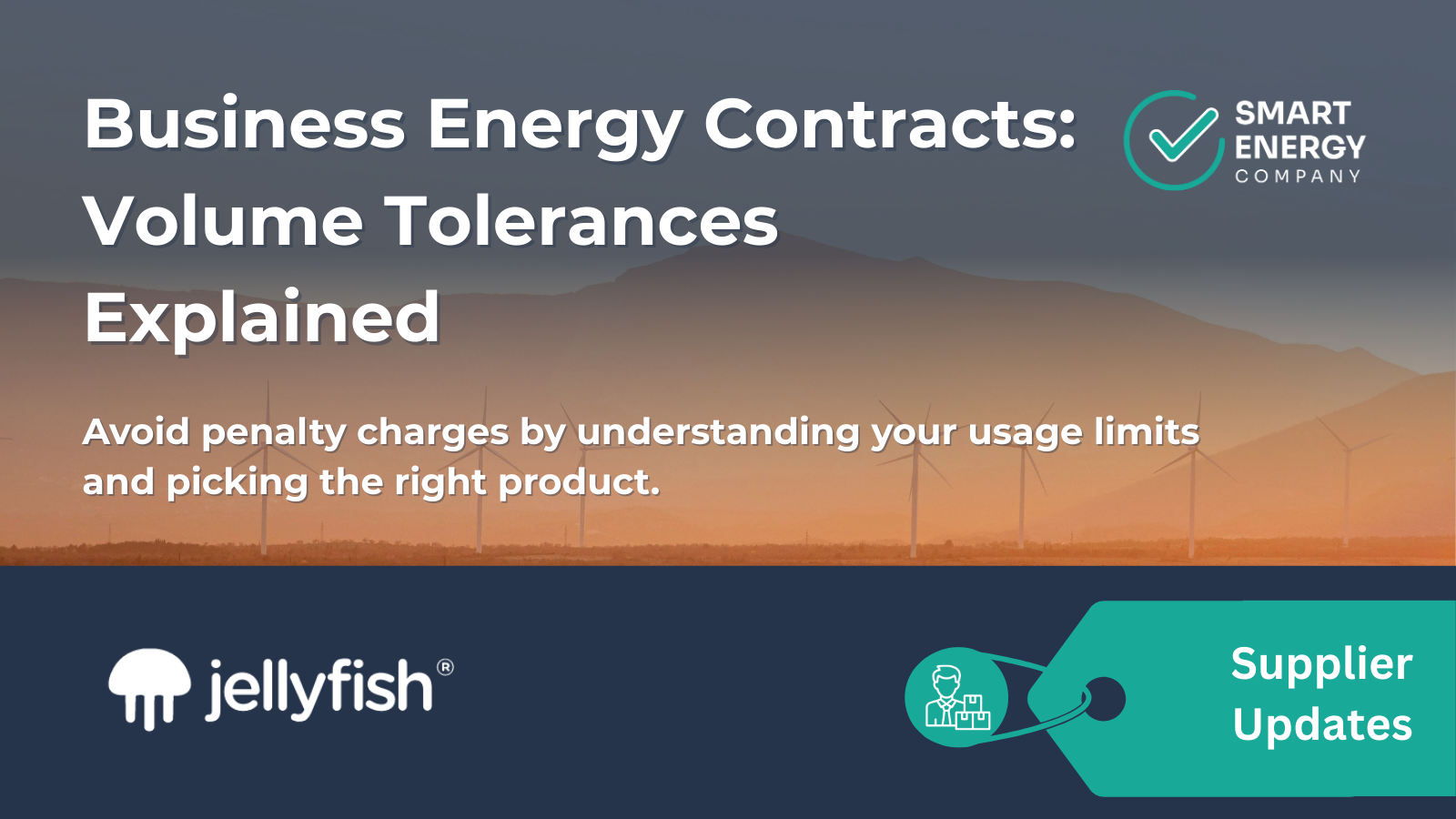Volume Tolerances in Energy Contracts | Jellyfish Example
And How One Misstep Could Cost You Hundreds: A Real Example Using Jellyfish Energy

📈 Understanding Volume Tolerances Could Save You Money — And Headaches
When businesses sign fixed energy contracts, most are focused on the unit rate and standing charge — but few pay attention to something just as important: volume tolerances.
Go even slightly over your agreed usage, and you could end up paying penalty rates far higher than what you signed up for.
In this blog, we break down:
- ✅ What volume tolerances are
- ✅ Why they exist in business energy contracts
- ✅ The real-world cost of exceeding them
- ✅ And how Jellyfish Energy structures their contracts, especially for clients with no credit checks
🔍 What Is a Volume Tolerance in an Energy Contract?
When you agree a business energy deal, your supplier estimates your Annual Quantity (AQ) — how much energy you’ll use over the year. Most contracts then include a Volume Tolerance — a percentage range you’re allowed to go above or below without penalty.
For example:
If your AQ is 50,000 kWh and your volume tolerance is ±10%:
- You can use between 45,000 and 55,000 kWh without issue.
- If you go outside that range, you’ll pay a penalty on the difference.
This tolerance protects the supplier (who buys energy in advance based on your AQ) — but if you’re not aware of it, it can become a costly surprise.
💭 What Are the Volume Tolerances for Your Contract?
👉 Let us review your contract and highlight the key risks.
⚠️ What Happens If You Go Over?
In many contracts, going above your tolerance means the excess units are charged not at your contracted rate, but at a higher penalty rate — often tied to the supplier’s deemed rates (the price charged when you have no active contract in place).
Let’s look at a real-world example using Jellyfish Energy.
📘 Jellyfish Energy Volume Tolerance Example
We work closely with Jellyfish Energy, and overall they’re a great supplier — responsive team, excellent portal system, and notably, they offer energy contracts without credit checks, which is rare in the market.
But each of their contract types (like Immortal, Gemini, etc.) has its own terms — and volume tolerance rules vary by product.
💡 Real Example:
A client agrees a contract at:
- 23.90p/kWh (electricity)
- 65p/day standing charge
- AQ: 50,000 kWh
- Product has 10% volume tolerance
- Actual usage: 56,000 kWh
That's 12% over, meaning 1,000 kWh are outside the allowed band.
⚠️ What’s the penalty?
Jellyfish’s deemed rate for Profile Class 01-04 as of 15/04/2025 is:
- 60.00p/kWh (unit)
- 250.00p/day (standing charge)
The penalty charge =
1,000 kWh × (60.00p – 23.90p) = 1,000 × 36.10p = £361.00
That’s £361 on top of what they already paid for those same units.
🧭 Choosing the Right Contract: Why It’s Not Just About Price
We often speak to clients who are tempted by a low rate but unaware of the fine print:
- Is there a volume tolerance?
- What’s the penalty if I go over?
- Are standing charges fixed or subject to change?
- What happens if I go under?
These details can dramatically affect your total spend — and it’s why we always advise our clients with a holistic view, not just on price.
What Are Volume Tolerances in Business Energy Contracts?
What is a volume tolerance in an energy contract?
A volume tolerance is the allowed range (+/- a percentage) around your estimated annual energy usage (AQ). If your business uses more or less than this range, you may be charged penalties — either for the extra usage or for not meeting your minimum volume.
Do all business energy contracts have volume tolerances?
Most fixed contracts include them, but the tolerance level (e.g., ±10%) and the penalty structure vary by supplier and product. Some specialist tariffs, like Jellyfish Energy’s Immortal, may come with no volume tolerance at all.
What happens if I exceed my contract's volume tolerance?
You may be charged a penalty rate on the excess usage — usually based on the difference between your contracted rate and the supplier’s deemed rate, which is often much higher.
What if I use less energy than my AQ?
You might still be penalised — some suppliers charge the difference between your AQ and actual usage at your agreed unit rate, meaning you could pay for energy you didn’t use.
Can I negotiate a wider tolerance band?
Sometimes. Depending on your supplier, consumption history, and contract type, it may be possible to negotiate a custom tolerance — especially if you have seasonal or fluctuating demand.
How do I find out what my current contract’s volume tolerance is?
👉 Click here to contact us and we’ll check for free.Check your contract or Proposal document — the AQ and volume tolerance (if applicable) should be listed there. Or, we can do it for you.
Are Jellyfish Energy contracts good for businesses with poor credit?
Yes — Jellyfish is one of the few UK suppliers that offers no credit check contracts. This makes them a solid option for businesses who’ve been turned away elsewhere — as long as you pick the right product and understand the terms, especially around usage.
❤️ Why We Recommend Jellyfish — With the Right Guidance
We continue to work closely with Jellyfish because:
- ✅ They’re one of the only suppliers offering no credit check contracts
- ✅ Their systems are fast, transparent, and easy to manage
- ✅ Their products can suit a wide range of business types — from startups to large SMEs
But: Product selection is key. Get it wrong, and you could face penalties. Get it right, and you’ll benefit from predictable rates, no hidden fees, and easy-to-manage energy.
🧠 How We Help
At Smart Energy, we don’t just compare prices — we dig deep into:
- Volume tolerance policies
- Deemed rate risks
- Contract clauses that matter
- Which products suit variable usage or credit issues
- And how to protect your business from avoidable costs
We speak supplier, so you don’t have to.
👇 Ready to make sure you're on the right contract?
👉 Avoid costly surprises. Let us guide you.
Explore More Insights
Dive into more energy updates, market reports, and supplier insights tailored for your business


